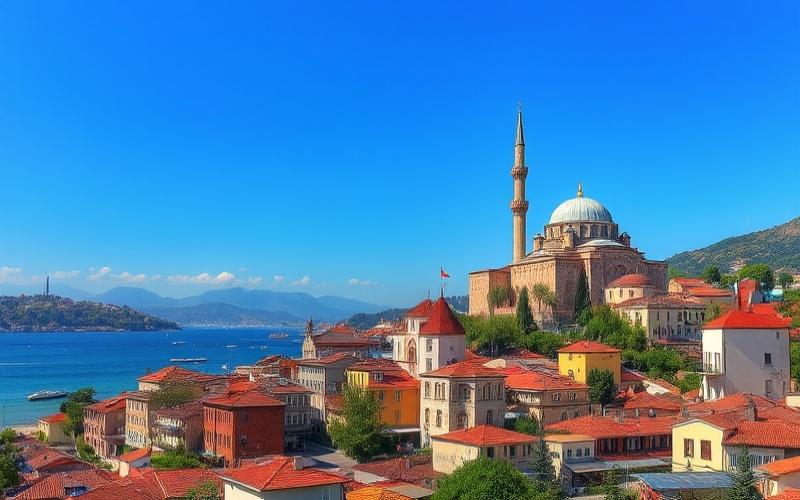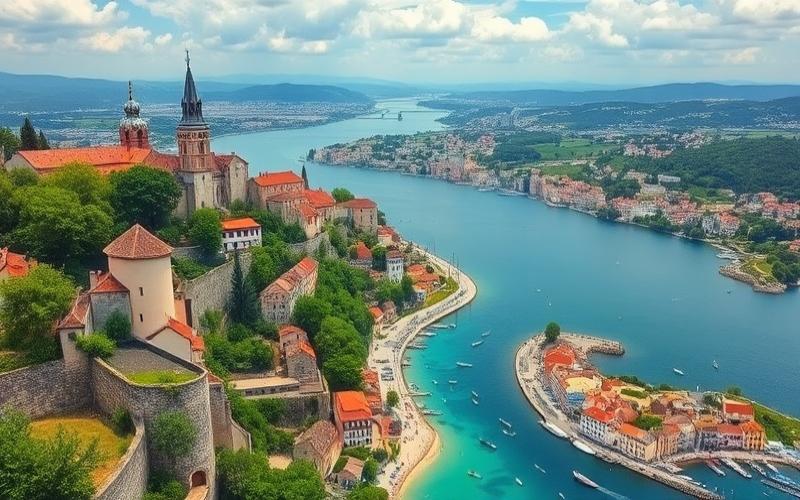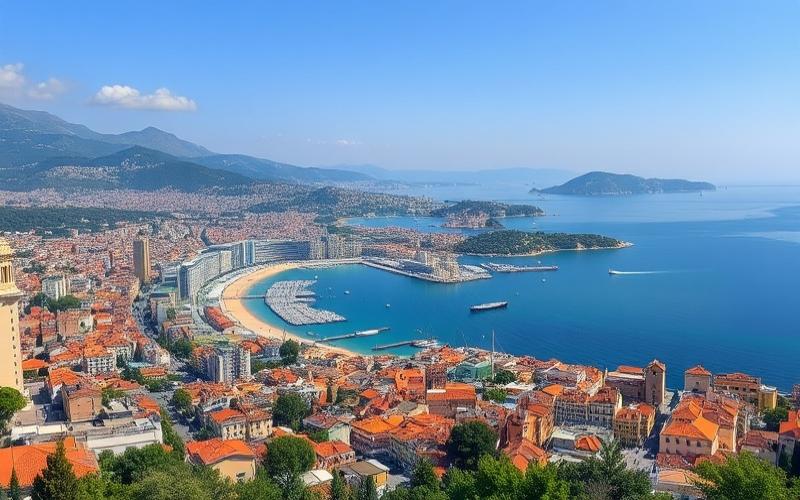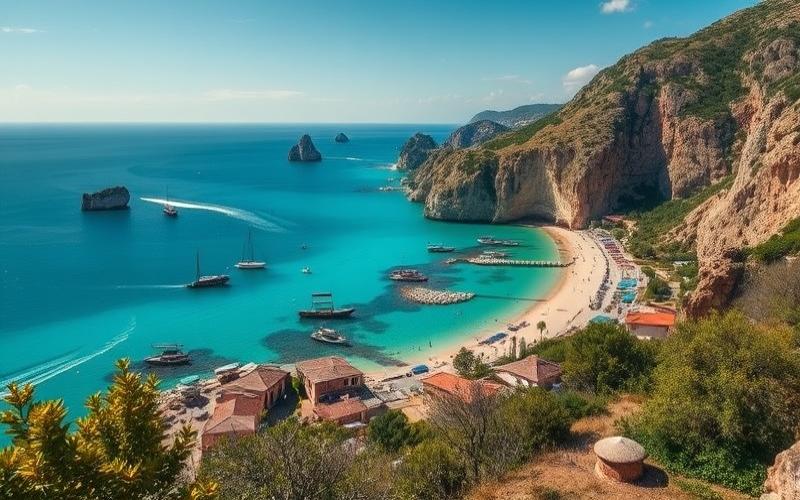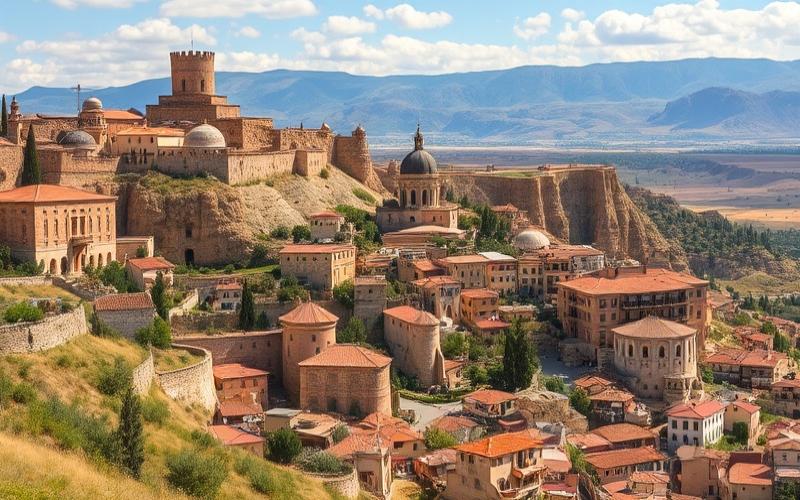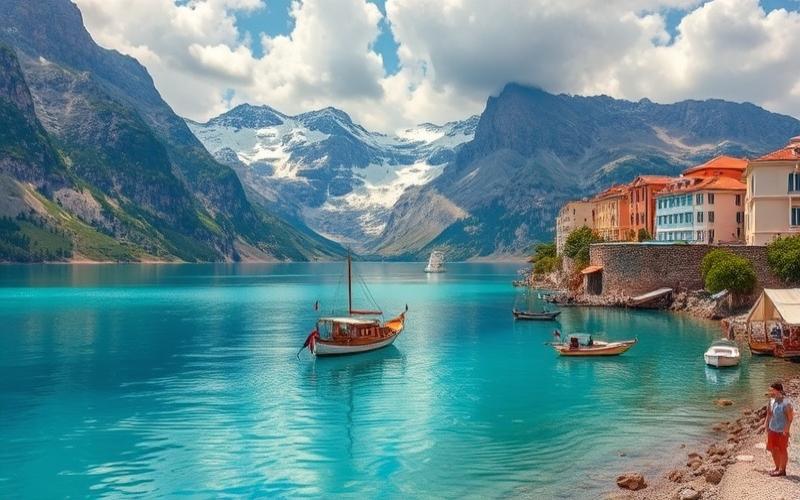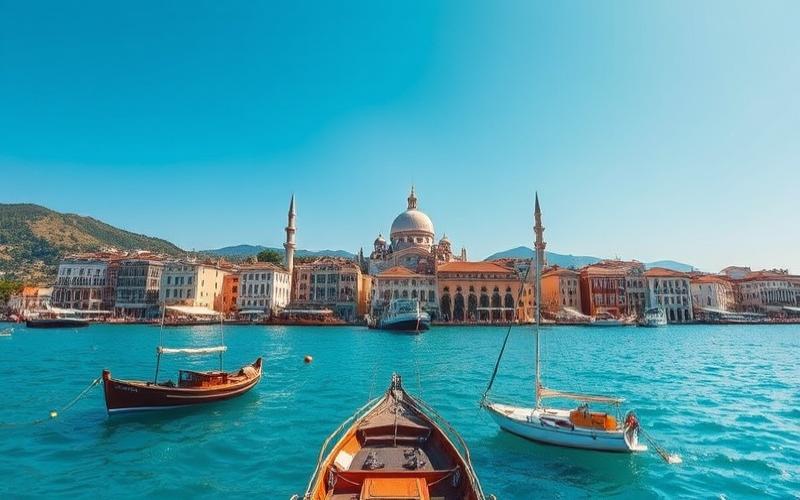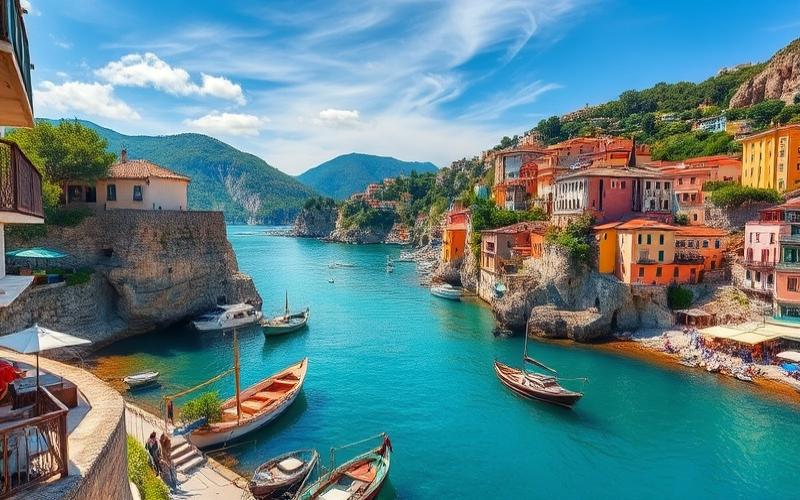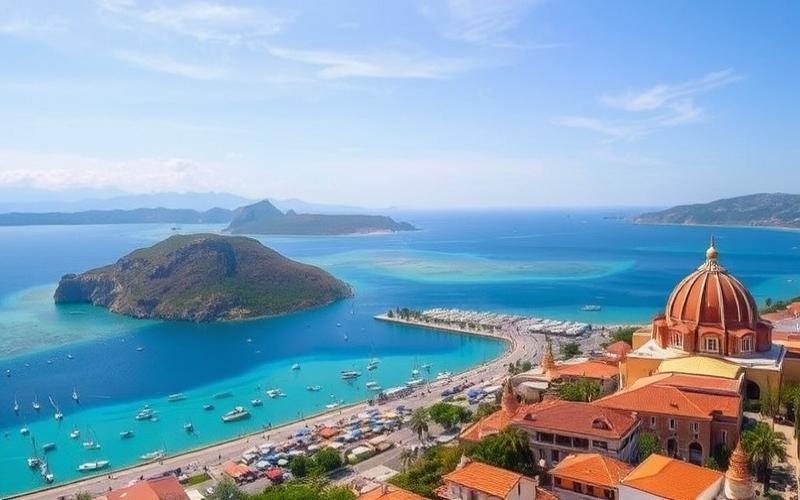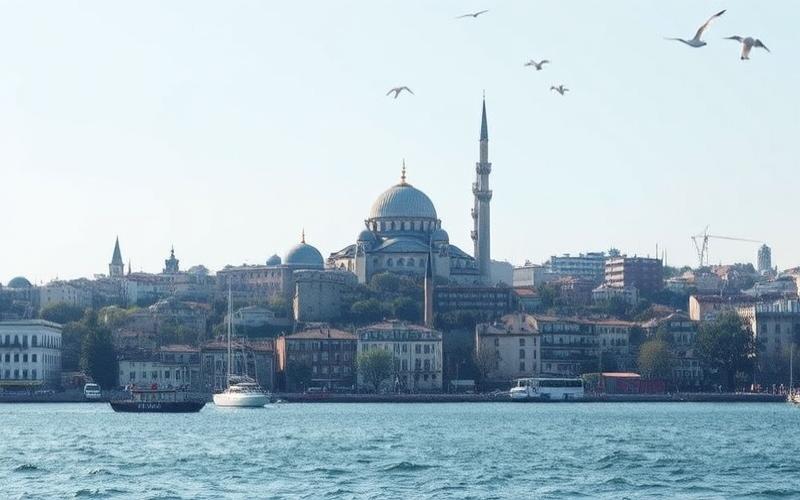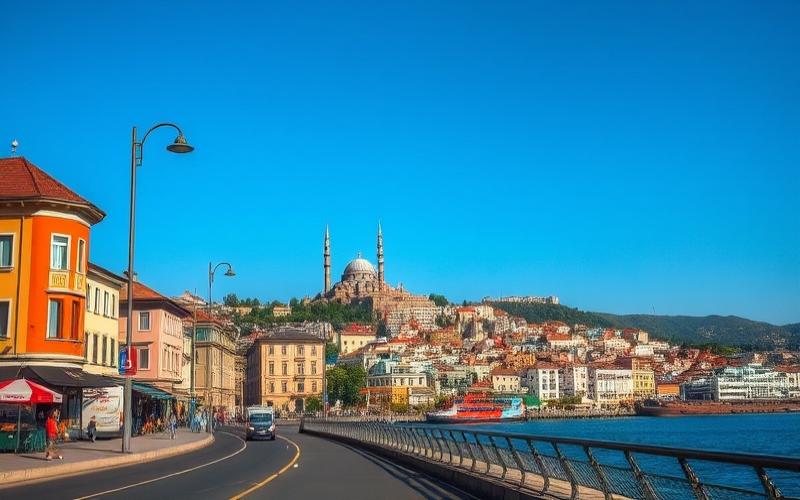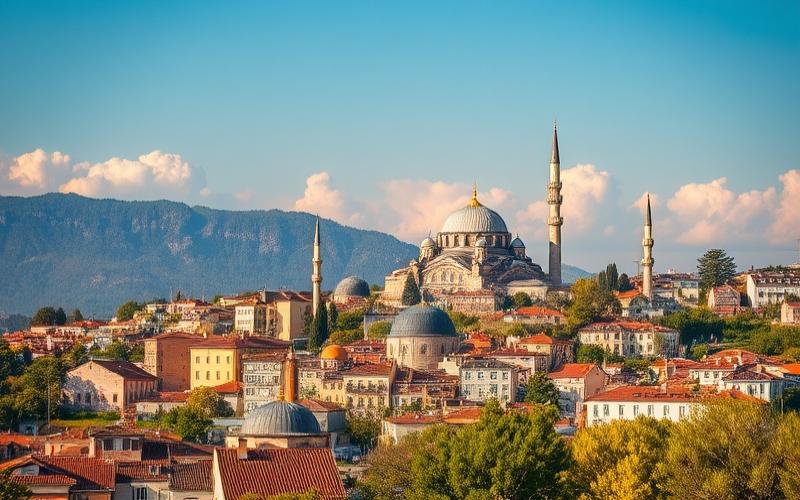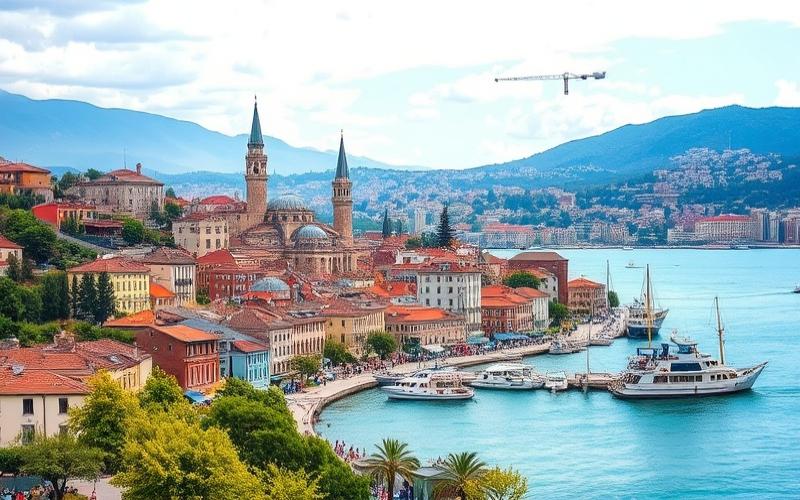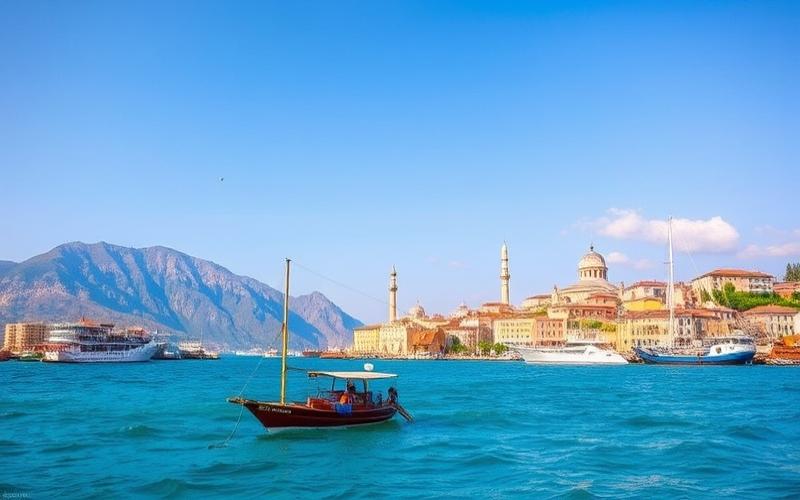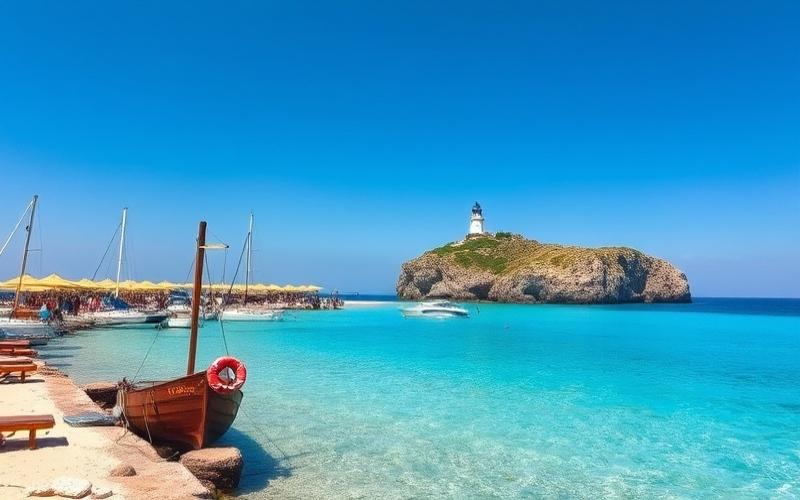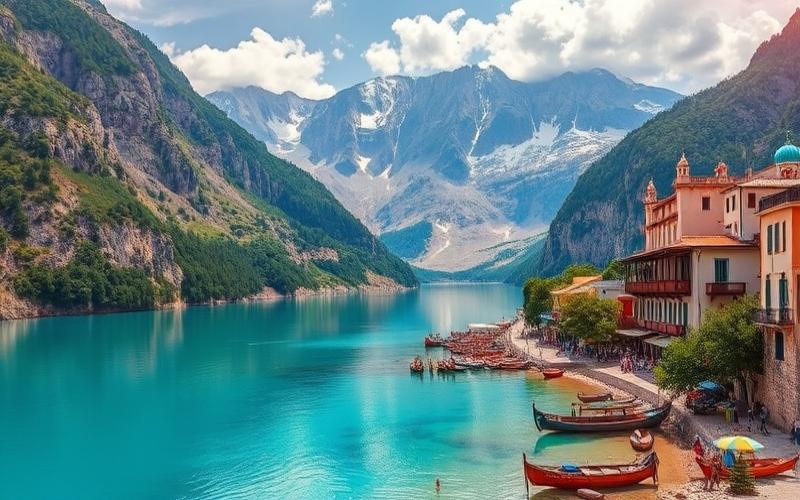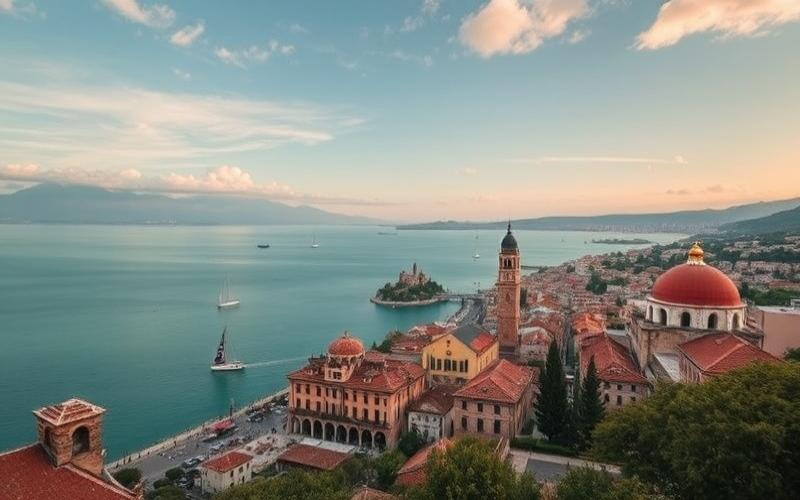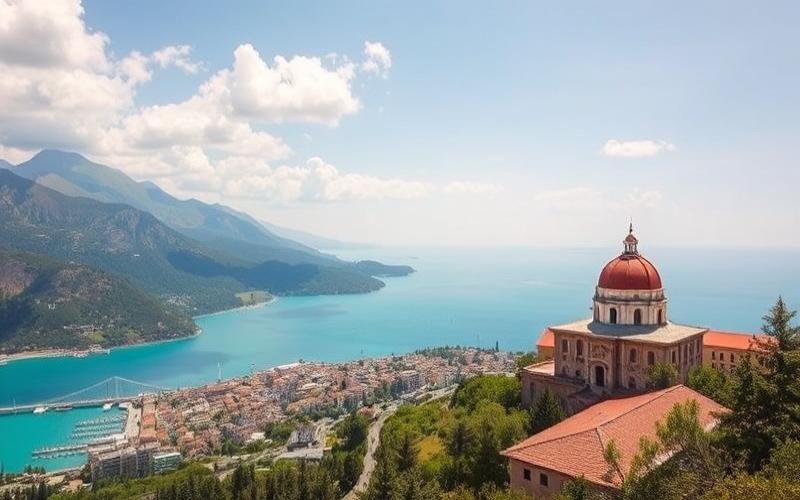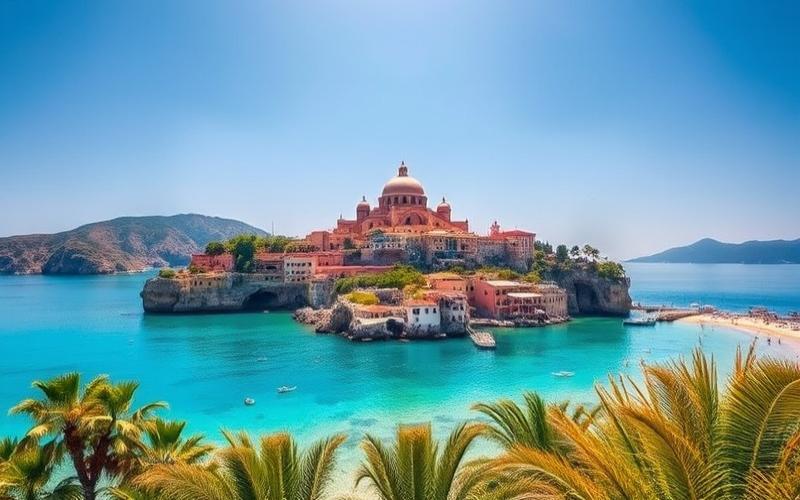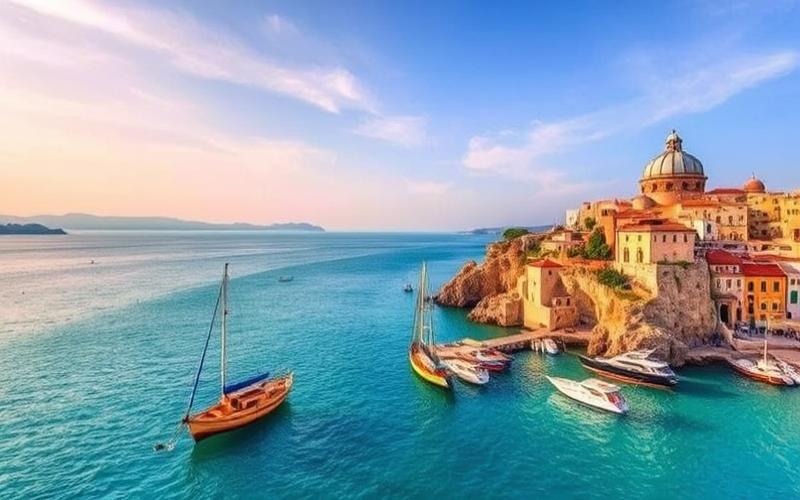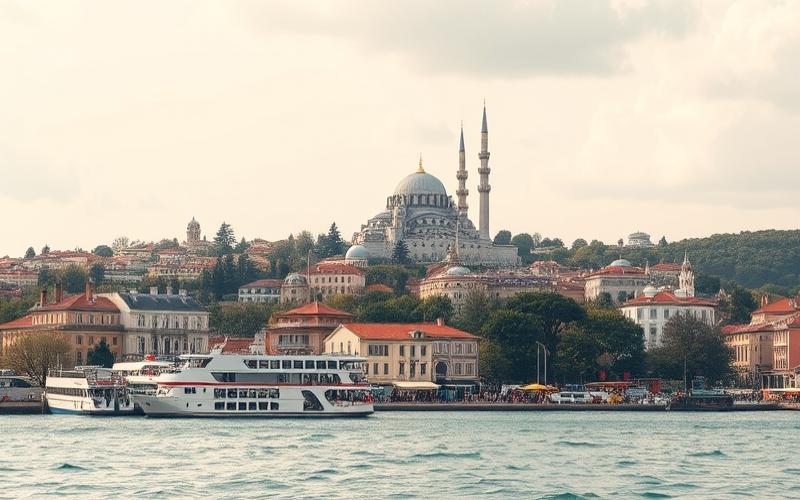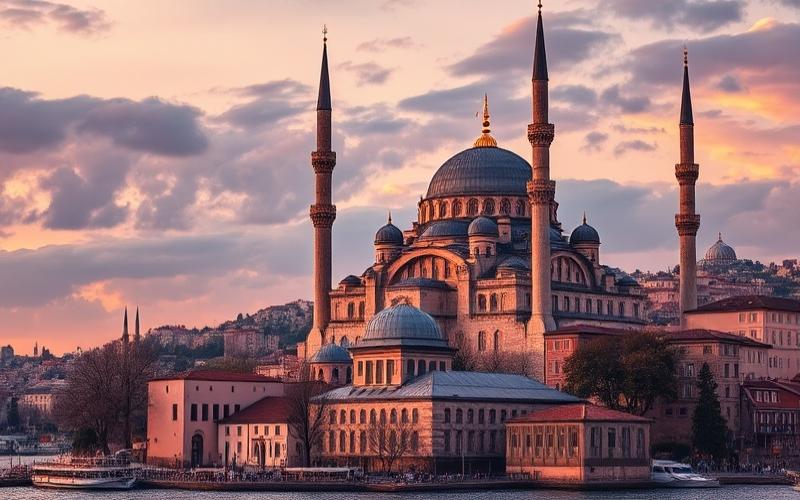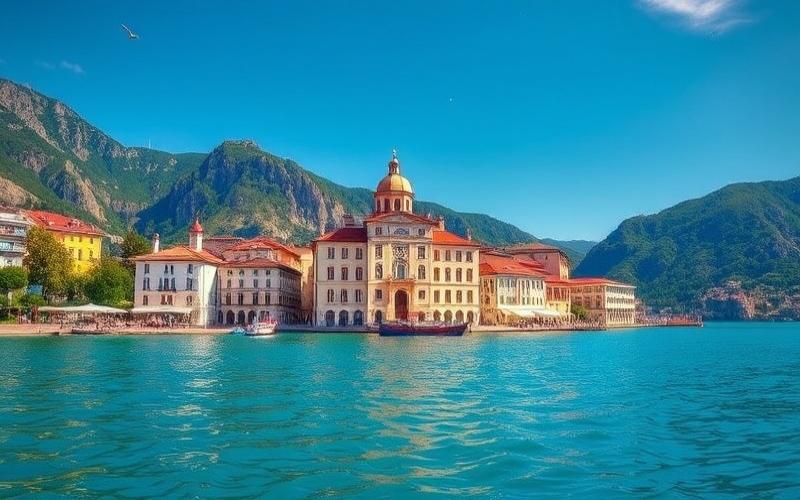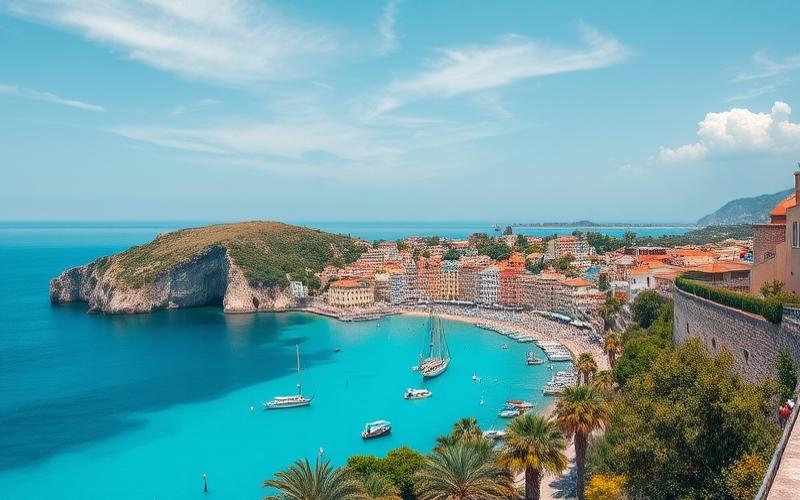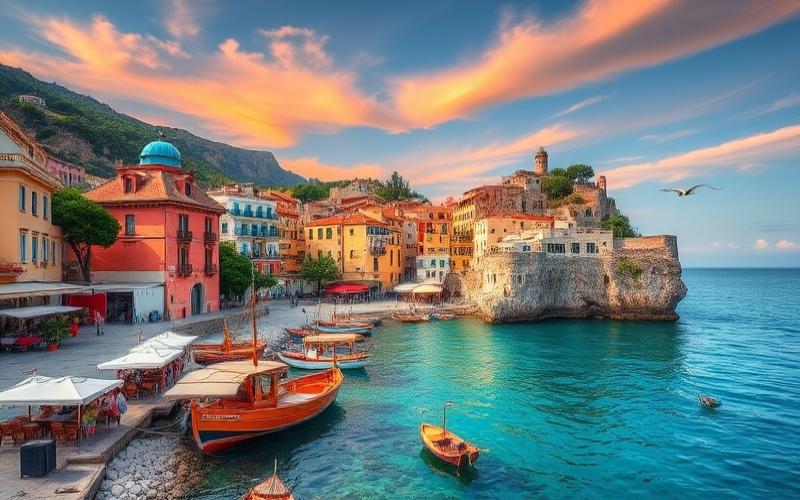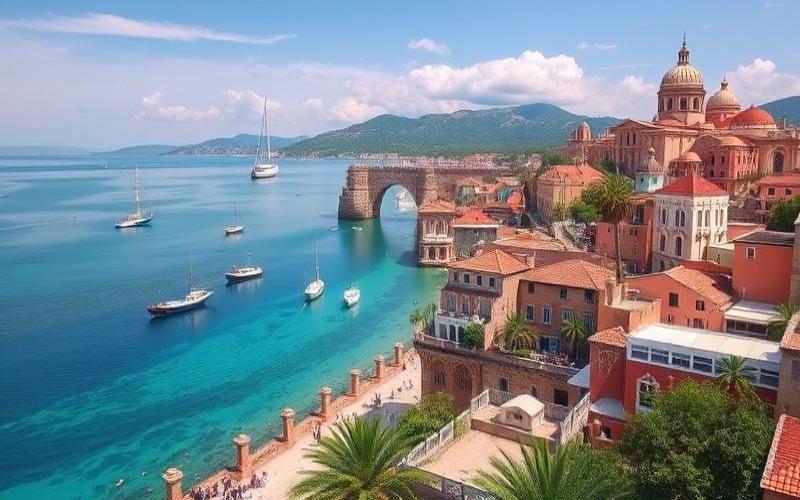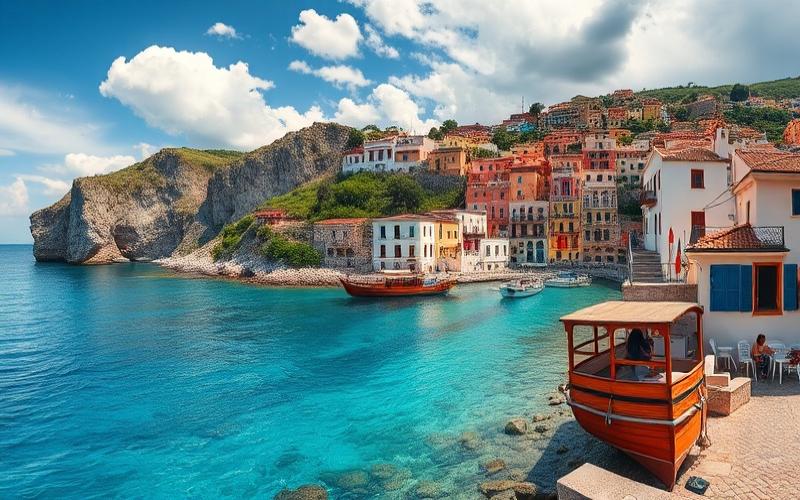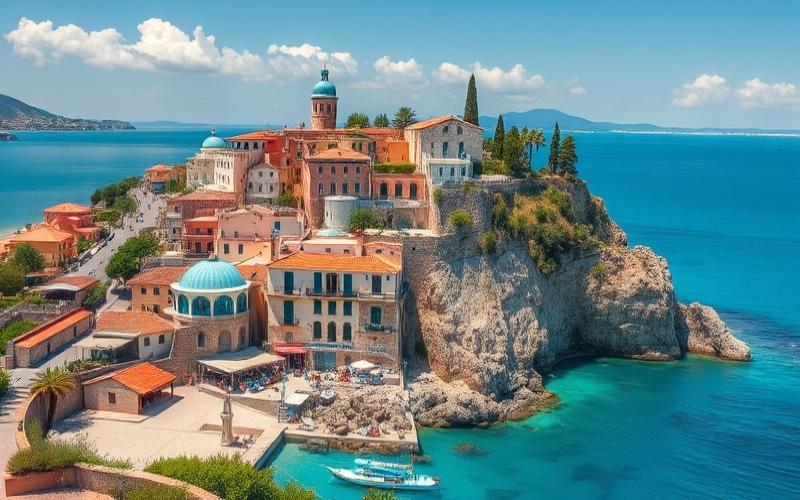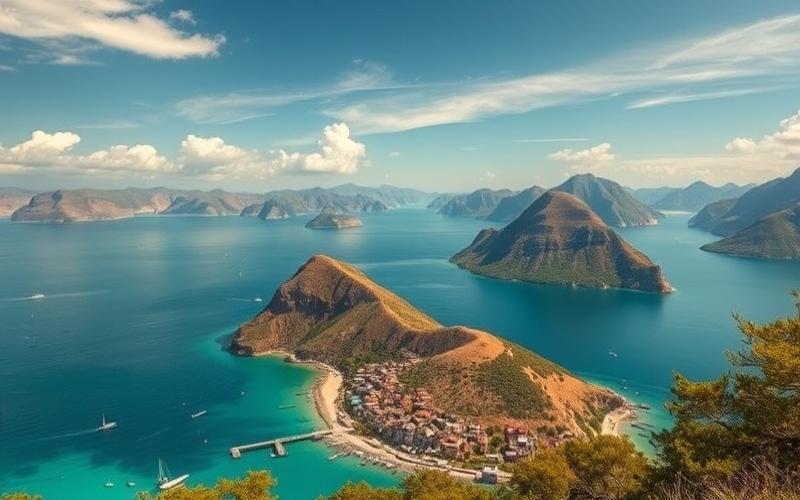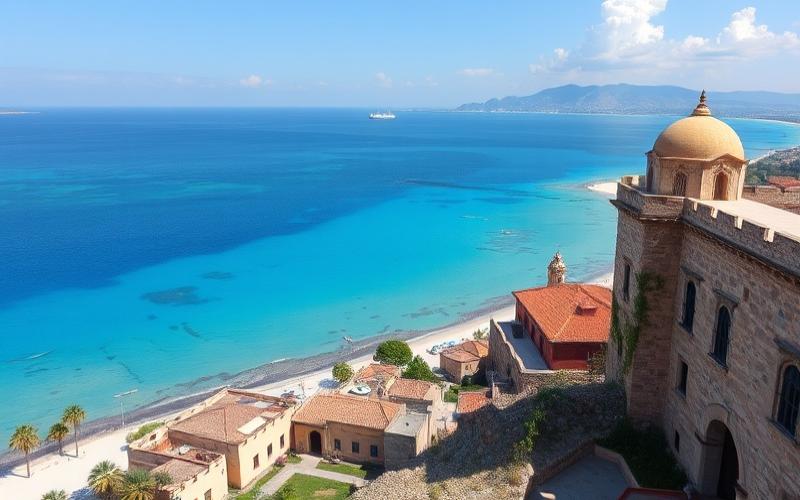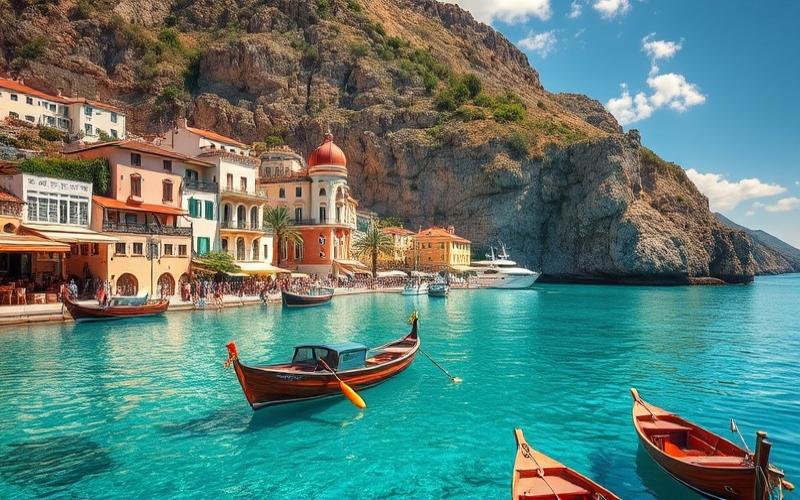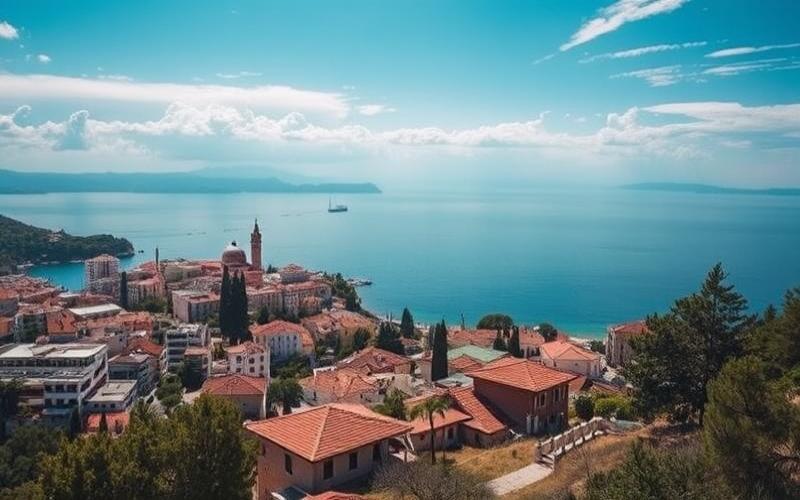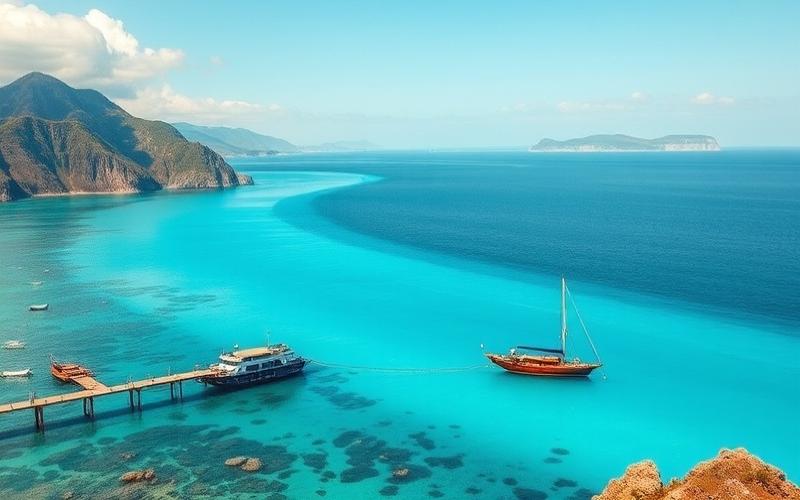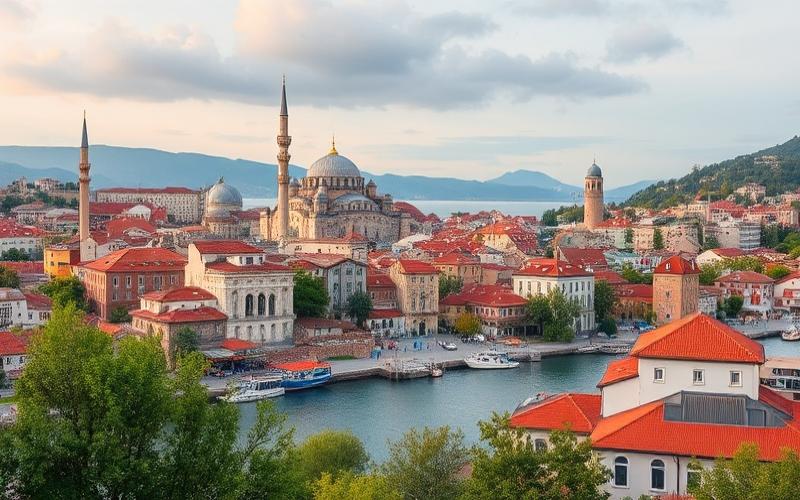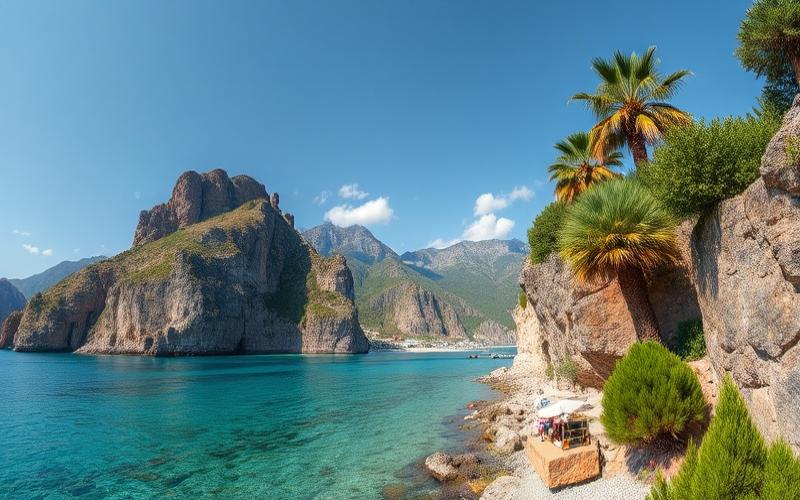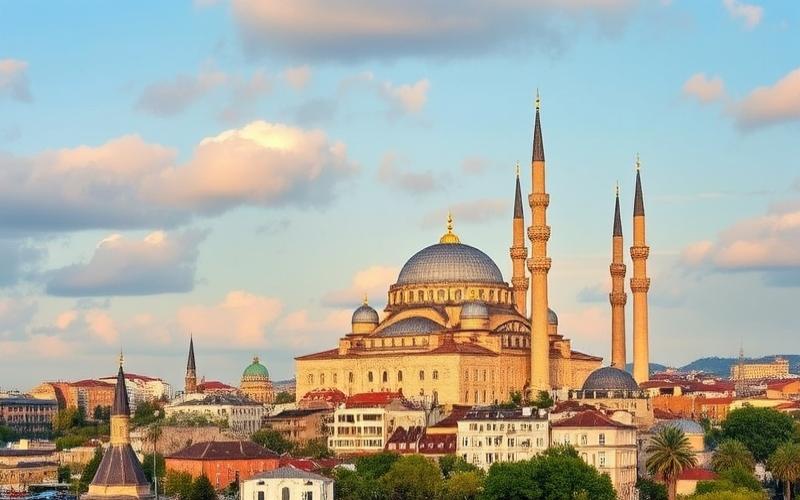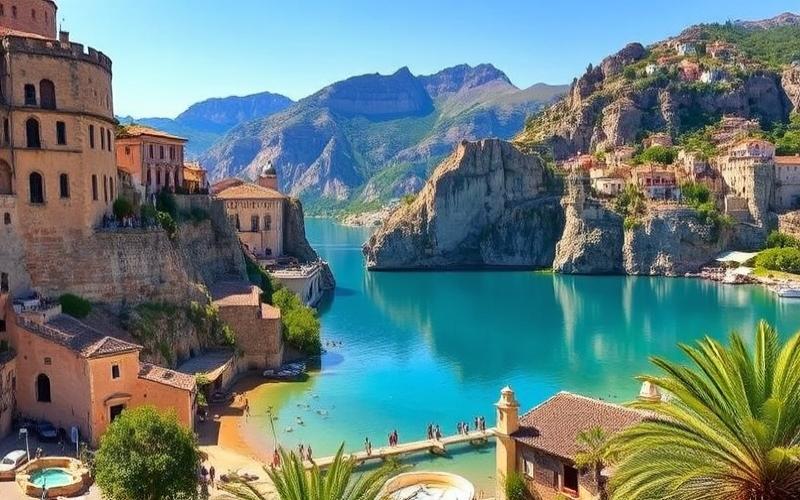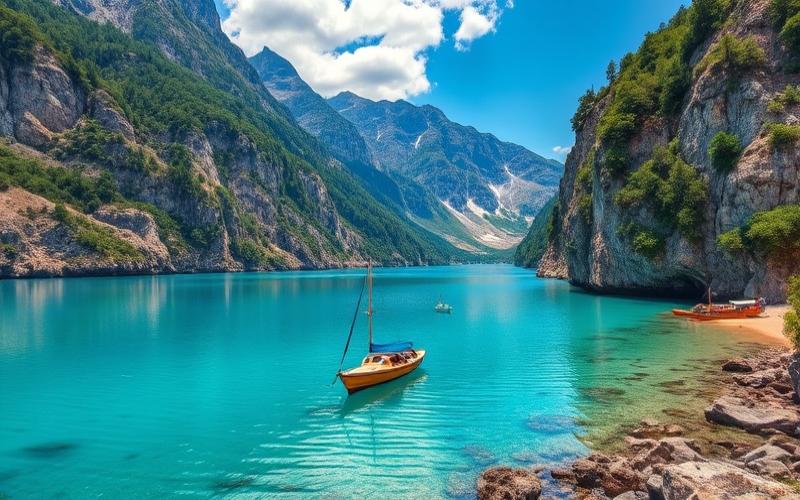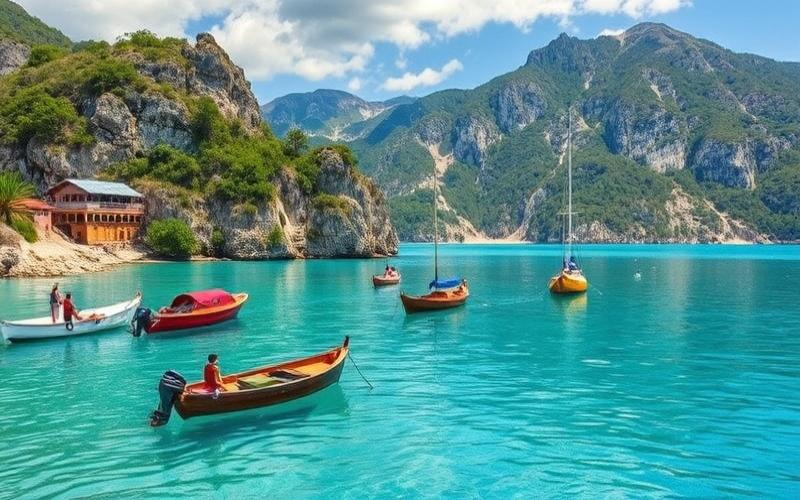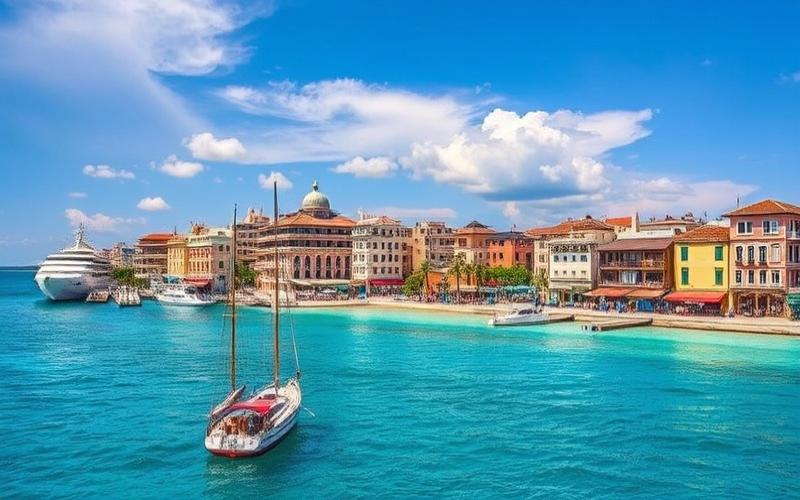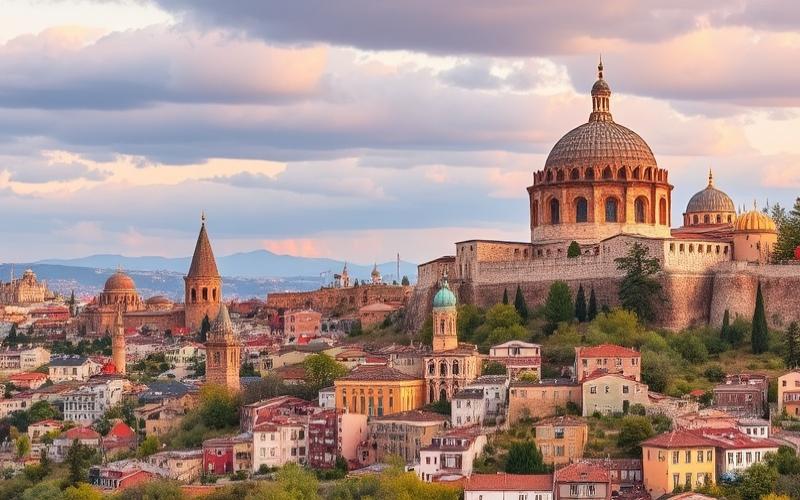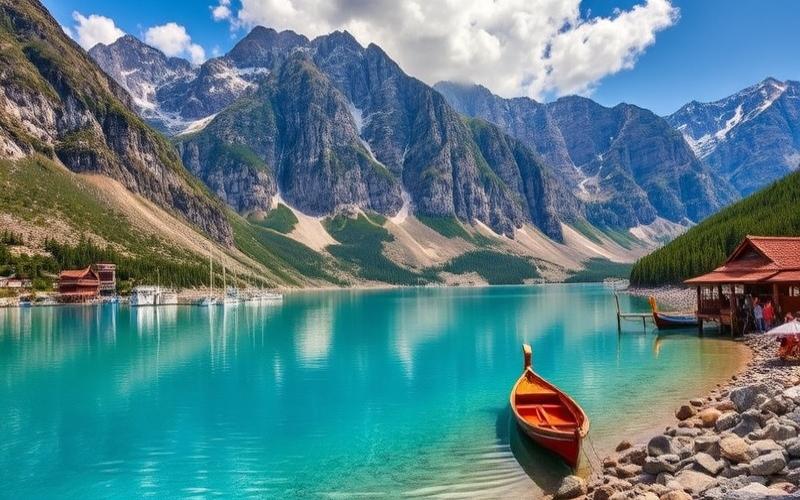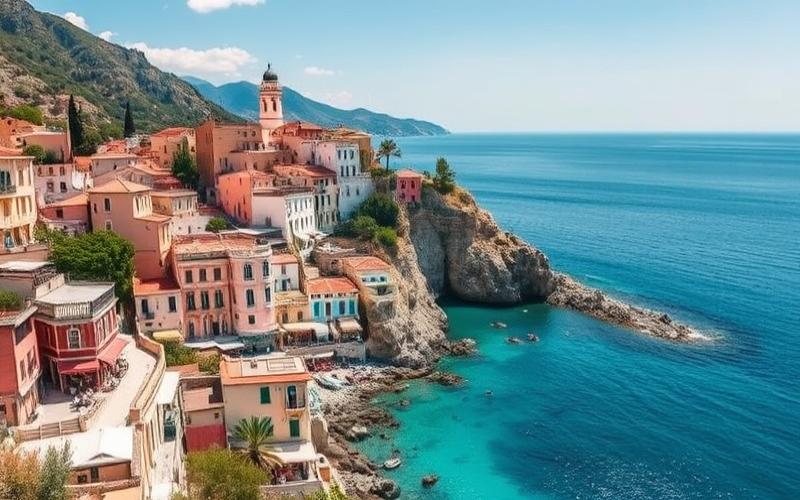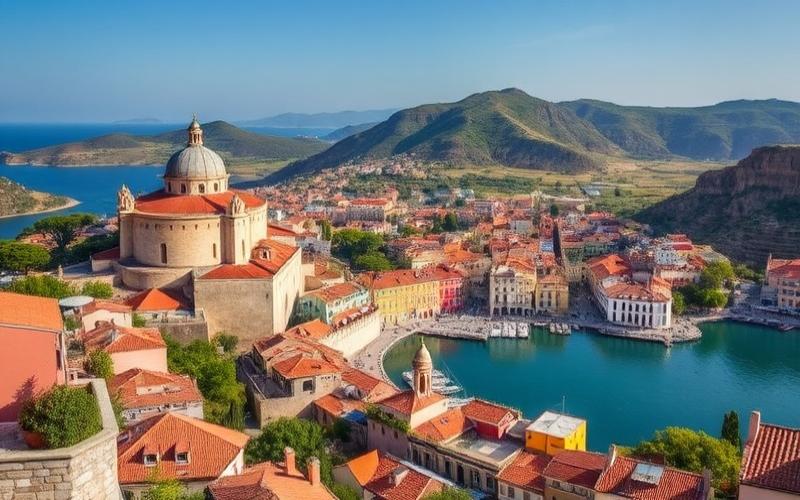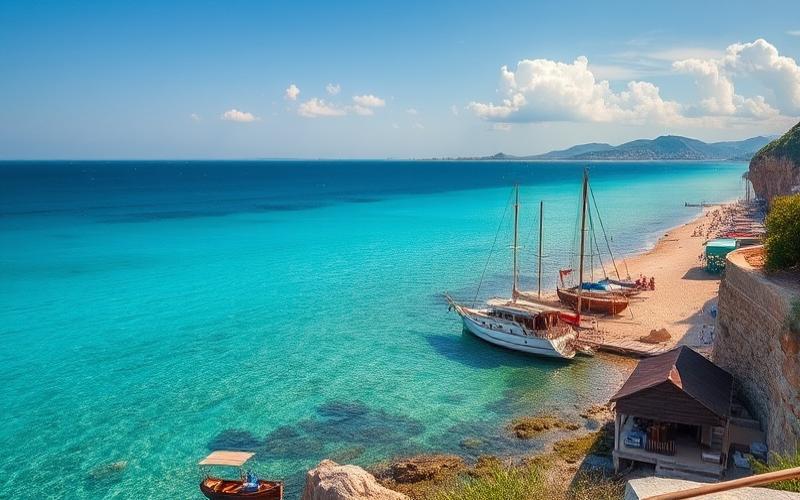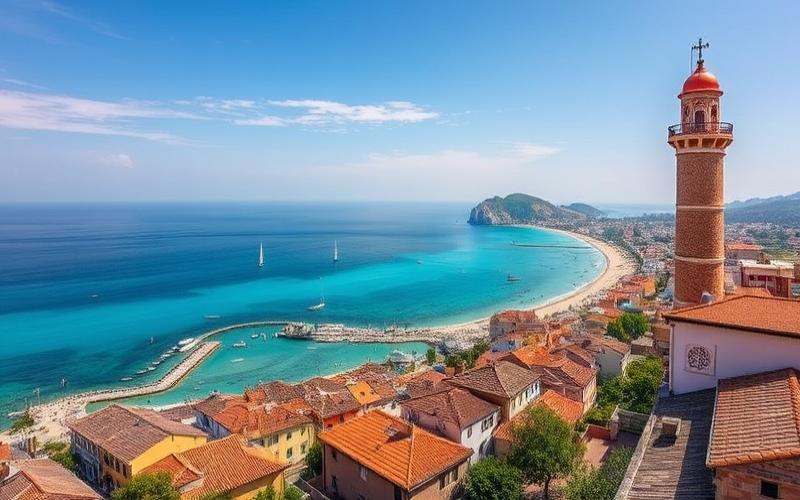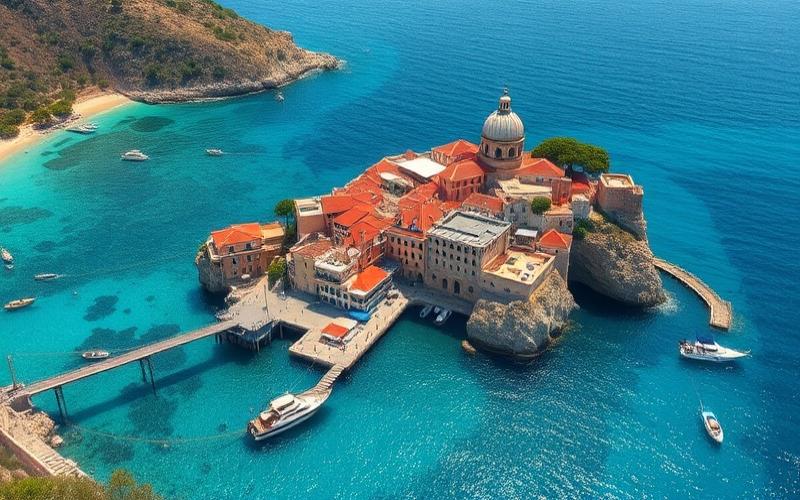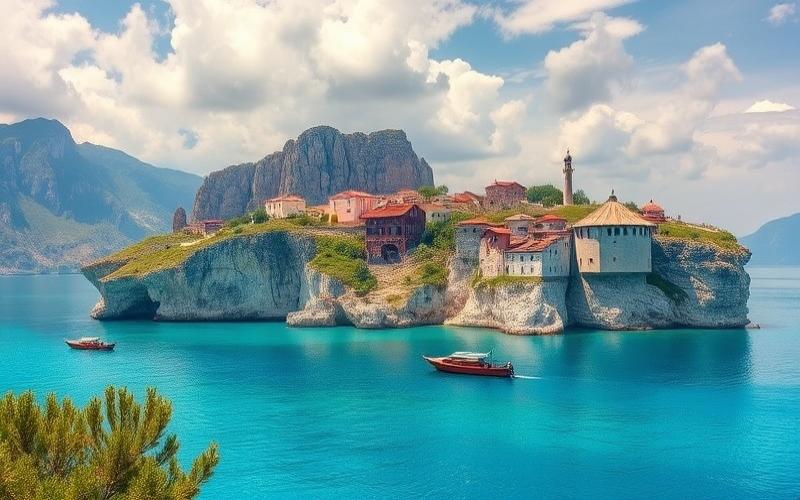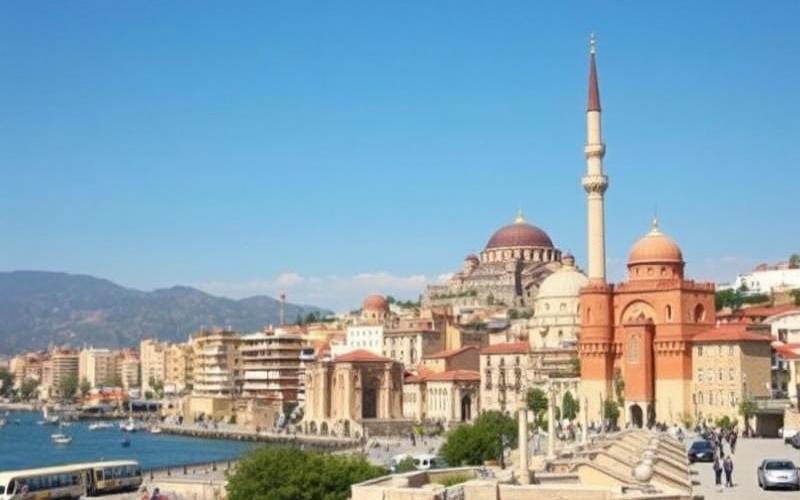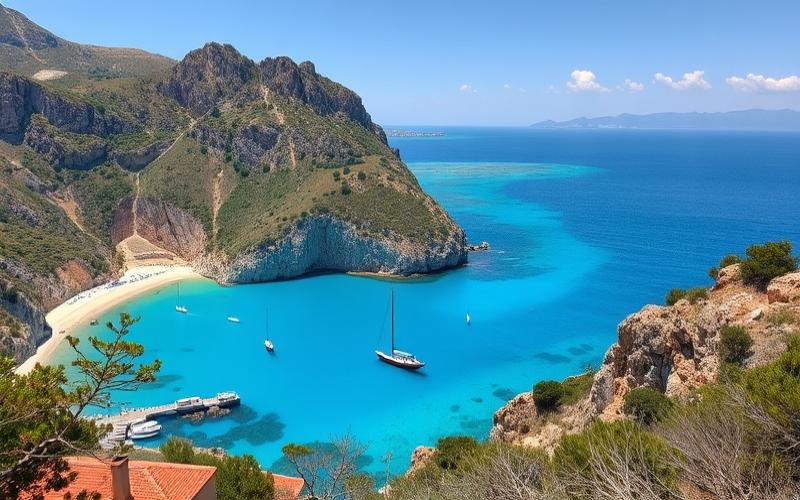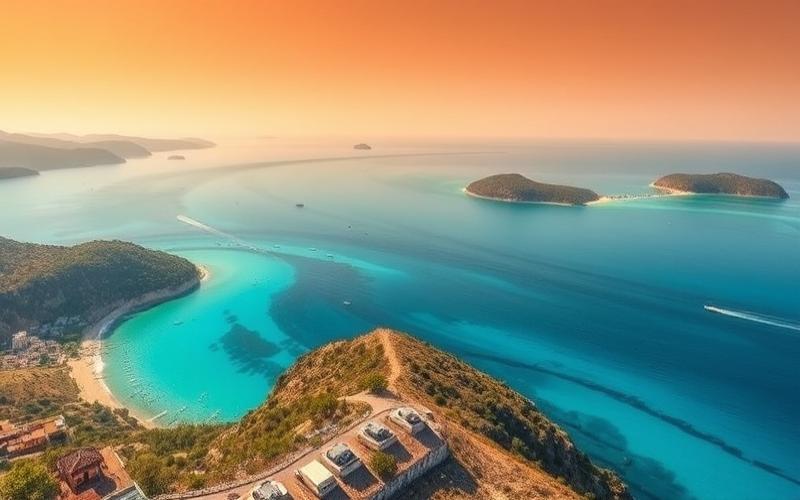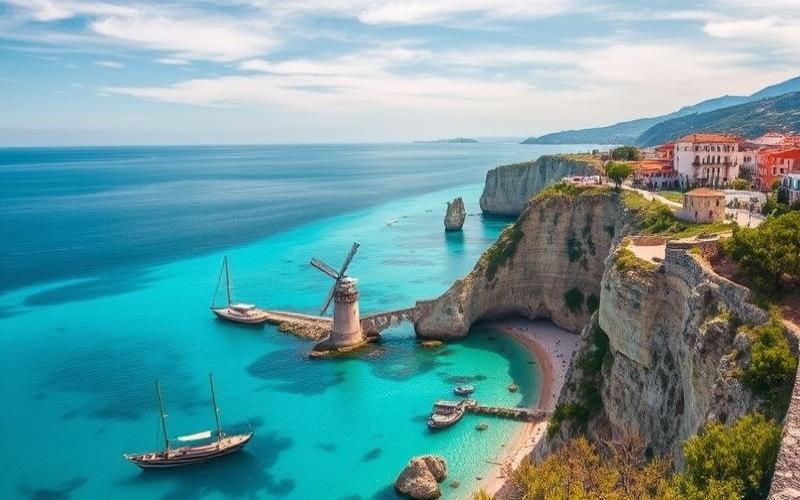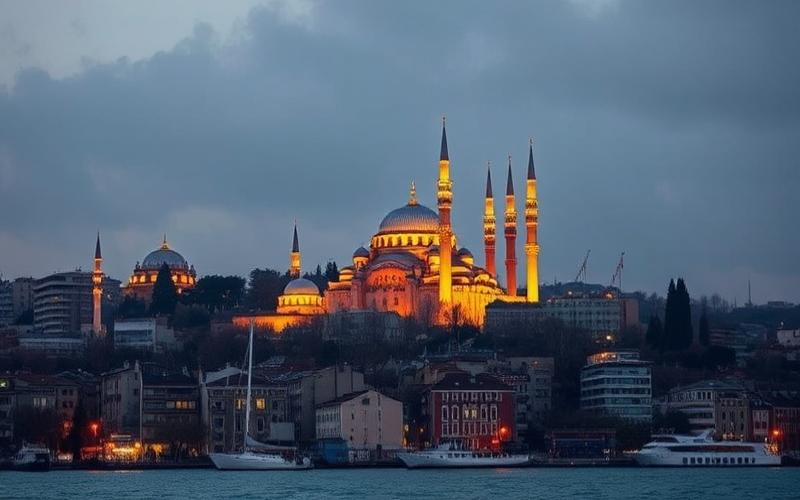
 Published on and written by Cyril Jarnias
Published on and written by Cyril Jarnias
Turkey, a country at the crossroads of East and West, is a true artistic treasure where centuries-old traditions blend with contemporary influences. By exploring its vibrant streets and visiting its dynamic artist studios and innovative galleries, one discovers a thriving art scene that reflects a rich and diverse culture. From the alleys of Istanbul to the historic center of Cappadocia, each region offers a unique palette of creative expressions, promising endless exploration for lovers of contemporary art and millennia-old craft heritage.
Turkish Art Scene: A Diverse Panorama
Turkey’s cultural diversity, shaped by its millennia-old history and geographical position between Europe and Asia, deeply nourishes contemporary artistic production. This plurality manifests in the coexistence of Ottoman traditions, Western influences, Anatolian heritage, and currents from minority groups, generating an artistic landscape where innovation and memory continuously interact.
Major Artistic Movements from the 20th Century to Today
- Academicism long dominated the Turkish scene until the 1960s.
- Turkish modern art then emerged, embodied by figures like Altan Gürman and Sarkis Zabunyan.
- The 1970s-80s saw the introduction of contemporary practices (installations, performance, video) through artists trained abroad.
- Since the 1990s, Turkish contemporary art has experienced international growth, marked by increasing institutionalization and the proliferation of exhibitions and biennials.
- Emerging Trends:
- Eco-art and reflections on sustainability, illustrated by artists like Deniz Sağdıç who works with recycled materials.
- A strong presence of engaged art (gender issues, collective memory, migrations).
- The use of technology and interdisciplinary approaches in many recent works.
Most Influential Turkish Artists and Their Impact
| Name | Practices | National/International Impact |
|---|---|---|
| Sarkis Zabunyan | Installation, multimedia | Pioneer of contemporary art, recognized at the Venice Biennale |
| Füsun Onur | Sculpture, installation | Major figure in conceptual art, exhibited worldwide |
| Hale Tenger | Installation, video | Engaged works, exhibited in major international institutions |
| Deniz Sağdıç | Upcycling, portrait | Innovative reflection on the environment, recognized for recycled materials |
| Nil Yalter | Video, performance | Pioneer of feminist and migratory art, international |
| Ayşe Erkmen | Installation, intervention | Present on the global scene (documenta, biennials) |
Galleries and Studios
Galleries and studios play a central role in Istanbul, Ankara, Izmir, etc., by supporting artistic diversity through:
- Organizing varied exhibitions and artist residencies.
- Showcasing young talents and artists from minority backgrounds.
- Creating bridges between the local and international scenes.
Must-Visit Spaces in Istanbul
- Istanbul Modern: reference for modern and contemporary art.
- Arter: platform for bold contemporary practices.
- Sakıp Sabancı Museum: blend of traditional and modern art.
- Beyoğlu Galleries: heart of the artistic avant-garde.
Art Events
Art events energize the Turkish scene:
- Istanbul Biennial: created in 1987, it has become one of the major contemporary art events, attracting artists and curators from around the world.
- Proliferation of festivals, temporary exhibitions, art fairs (Contemporary Istanbul), which foster encounters between local and international artists and stimulate artistic debate.
Unique Geographical Position
Turkey’s unique geographical position fosters intense intercultural exchanges:
- Constant dialogue between Europe and Asia, visible in themes, techniques, and artist networks.
- Cross-influences in motifs, subjects, and collaborations, enhancing the originality of the Turkish art scene.
Evolution Prospects of the Turkish Art Scene
- Increased internationalization, with growing participation in major global events.
- Diversification of practices, driven by a young generation of artists sensitive to global issues (ecology, identities, migrations).
- Persistent challenges: sometimes restrictive political context, need to support freedom of expression and independence of cultural institutions.
- Potential for influence: Turkey, a cultural crossroads, asserts itself as an essential contemporary art scene, capable of renewing dialogues between East and West.
The Turkish art scene, rich in contrasts and its ability to weave links between heritage and innovation, stands as a dynamic laboratory at the heart of 21st-century artistic challenges.
Good to Know:
The Turkish art scene is deeply marked by cultural diversity resulting from its strategic position between Europe and Asia, widely influencing contemporary artistic production. From modern artistic movements to the current effervescence, Turkey carries a wealth of styles where new trends such as digital art and immersive installations emerge. Influential artists like Osman Hamdi Bey and Fahrelnissa Zeid have left a lasting impact, while contemporaries like Halil Altindere gain international recognition. Galleries and studios in Istanbul, Ankara, and other major cities play a crucial role in supporting this creative hub, offering platforms for expression and encounter. Major art events like the Istanbul Biennial enrich this dynamic panorama by fostering intercultural exchange and opening new perspectives. These exchanges are reinforced by the country’s unique geography, catalysts for art transcending borders. Looking to the future, the Turkish art scene is set in a global context, promising innovation and enriching dialogue.
Discovering Art Studios in Turkey
Art studios in Turkey embody a diversity of mediums and traditions, reflecting the country’s cultural richness through vibrant and creative spaces. There is a great variety of studios, each rooted in its territory and history, offering visitors and artists an authentic immersion in Turkish art.
| Region | Studio Type | Main Medium | Distinctive Feature |
|---|---|---|---|
| Istanbul | Contemporary studios | Painting, sculpture | Fusion of modern and traditional art |
| Cappadocia | Traditional studios | Ceramics, carpets | Ancestral techniques |
| Konya | Weaving studios | Wool/silk carpets | Sufi motifs, mystical ambiance |
| Kayseri | Carpet studios | Floral carpets | Refined floral patterns |
| Antalya | Yörük studios | Geometric carpets | Vivid colors, nomadic heritage |
| Ankara/Eskisehir | Urban art studios | Painting, sculpture | Modern art, innovation |
Main Artistic Mediums:
- Ceramics: Especially in Cappadocia, where volcanic clay is shaped according to skills passed down through generations. Studios often offer demonstrations and workshops in a warm atmosphere where craft gestures blend with contemporary creativity.
- Painting and Sculpture: Predominant in Istanbul, Ankara, and Eskisehir, where studios participate in modern and international artistic life. The ambiance is both studious and effervescent, driven by a quest for innovation and dialogue between East and West.
- Weaving and Carpets: Ancestral art in Kayseri, Konya, Antalya, and Istanbul, studios perpetuate the tradition of Turkish carpets, symbols of regional identity. Wool, silk, and natural dyes are used to create patterns carrying meaning and history. The atmosphere is imbued with respect for material and collective memory.
Examples of Renowned Studios:
- Tophane-i Amire Cultural and Art Center (Istanbul): Housed in a former Ottoman arsenal, this center hosts contemporary art exhibitions and workshops, becoming a crossroads for local and international artists.
- Kayseri Studios: Renowned for transmitting floral carpet craftsmanship, they train generations of artisans and welcome visitors from around the world.
- Ankara Painting and Sculpture Museum: A true hub for contemporary artists, it organizes workshops and residencies, contributing to the international reach of Turkish art.
Impact on Community and Creative Economy:
- Studios boost the local economy by creating jobs, attracting tourists, and valuing regional skills.
- They play a transmission role, offering artistic training to young generations while preserving the authenticity of traditions.
- As places of intercultural exchange, they foster encounters between Turkish and foreign artists, stimulating innovation and collaborative creation.
Artist Anecdotes:
“Every piece I shape carries the memory of the volcanic earth and the echo of the ancient potters in my family. Foreign visitors are often surprised by the human warmth and generosity of our studio.”
A Cappadocian Ceramist
“Working in a collective studio in Istanbul allowed me to exhibit in Paris and Berlin. Here, art is a bridge between cultures, a permanent invitation to explore the unknown.”
An Istanbul Painter
Opportunities for Visitors and Foreign Artists:
- Participation in short workshops or artistic residencies.
- Interactive discovery of traditional and contemporary techniques.
- Immersion in local life, with the possibility to collaborate on joint projects and present works in temporary exhibitions.
Discovering art studios in Turkey means diving into a universe where every craft gesture carries history, emotion, and innovation, in a permanent dialogue between past and future.
Good to Know:
In Turkey, art studios stand out for their incredible richness, covering varied disciplines like ceramics in Iznik, famous for its ornate tiles, sculpture in Istanbul, or traditional painting in Ankara. These creative spaces offer a unique atmosphere that fuses history and innovation, reflecting the country’s cultural diversity. Renowned studios, such as the Çanakkale Ceramics Studios, have projected Turkish art onto the international stage. This artistic vitality not only stimulates the local creative economy but also facilitates cultural exchange and innovation, attracting many foreign artists. Anecdotes from resident artists reveal continuous inspirations from local culture, and some studios even offer programs for visitors wishing to immerse themselves in this captivating artistic universe.
Encounter with Sofia’s Emerging Galleries
The emergence of contemporary art galleries in Sofia has its roots in the post-communist period, marked by progressive cultural openness and a desire for integration into the international art scene. After 1989, Bulgaria saw the birth of a new generation of creators, supported by the appearance of independent exhibition spaces fostering artistic experimentation and the expression of multiple identities. This growth is part of a context of rediscovering local heritage and renewed dialogue with Europe and its regional neighbors.
Historical and Cultural Factors in Sofia:
- Fall of the communist regime: liberalization of the cultural sector, rise of private initiative.
- Role of art universities and independent associations in training young artists.
- Growing influence of European exchanges and cross-border projects.
Comparison of Artistic Approaches Sofia / Turkey:
| Sofia (Bulgaria) | Turkey (Istanbul) |
|---|---|
| Predominance of conceptual art, installations, video, photography. | Strong Ottoman and Byzantine heritage, coexistence of contemporary art and more traditional practices (calligraphy, decorative arts). |
| Many emerging galleries focused on the local scene and experimentation. | Scene structured around major fairs (e.g., Contemporary Istanbul), but strong presence of local artists favoring baroque or kitsch, according to some critiques. |
| Identity search and reflection on post-Soviet memory. | Fusion of old and modern, questions about modernization and the place of public art. |
Examples of Notable Galleries in Sofia:
- Structura Gallery: Offers a dialogue between Bulgarian and international artists, with particular attention to the young generation (e.g., Rada Boukova, Kalin Serapionov). Mission: support local production while promoting the circulation of works abroad.
- Credo Bonum Gallery: Supports initiatives of young visual artists, fosters interdisciplinary projects and social engagement.
- +359 Gallery: Located in a former water tower, it highlights emerging artists and promotes Bulgarian contemporary art internationally.
Highlighted Young Artists:
- Rada Boukova (installations, contextual art)
- Lachezar Boyadjiev (visual art, installations)
- Borjana Ventzislavova (photography, video)
Similarities and Differences with Turkey:
- In Sofia, the focus is on experimentation, social critique, and dialogue with recent history, whereas in Istanbul, the scene seems to oscillate between contemporary innovation and the valorization of decorative or baroque art.
- Both capitals share a desire to integrate into regional and international networks, but Istanbul benefits from greater visibility thanks to major events and its history as a cultural crossroads.
Examples of Exchanges and Artistic Collaborations:
- Organization of cross-residencies between Bulgarian and Turkish artists.
- Participation of Sofia galleries in fairs in Istanbul and vice versa, allowing the discovery of new scenes and the creation of transnational networks.
- Joint projects around public art and thematic exhibitions on shared memories or cultural borders.
Events Illustrating Regional Interconnectivity:
- Reciprocal invitations at biennials or contemporary art festivals.
- Workshops and conferences bringing together curators and artists from both countries to debate creation issues in the Balkans and beyond.
- Initiatives of online platforms promoting artist mobility and the dissemination of works on a regional scale.
The vitality of the emerging scene in Sofia is explained by a local dynamic of openness and renewal, while engaging in a fruitful dialogue with neighbors, notably Turkey, where tradition and modernity intersect in sometimes contrasting but often complementary forms.
Good to Know:
The emerging galleries of Sofia, once rooted in its rich cultural heritage from the Soviet era, have recently established themselves as dynamic pillars of contemporary art, partly thanks to initiatives like Sarieva Gallery which actively promotes young Bulgarian artists like Stephan Dougléov. Compared to Turkey, where artistic currents are often imbued with Ottoman motifs and modern sensibilities, Sofia favors an eclectic approach, marked by surrealism and lyrical abstraction. Events like Sofia Art Week illustrate cultural exchanges between Bulgaria and Turkey, notably through collaborations with Istanbul galleries that foster a vivifying cross-border dialogue. Thus, while in Turkey contemporary art draws from a complex history blending tradition and innovation, Sofia stands out for the experimental audacity of its new generation of artists.
Disclaimer: The information provided on this website is for informational purposes only and does not constitute financial, legal, or professional advice. We encourage you to consult qualified experts before making any investment, real estate, or expatriation decisions. Although we strive to maintain up-to-date and accurate information, we do not guarantee the completeness, accuracy, or timeliness of the proposed content. As investment and expatriation involve risks, we disclaim any liability for potential losses or damages arising from the use of this site. Your use of this site confirms your acceptance of these terms and your understanding of the associated risks.


